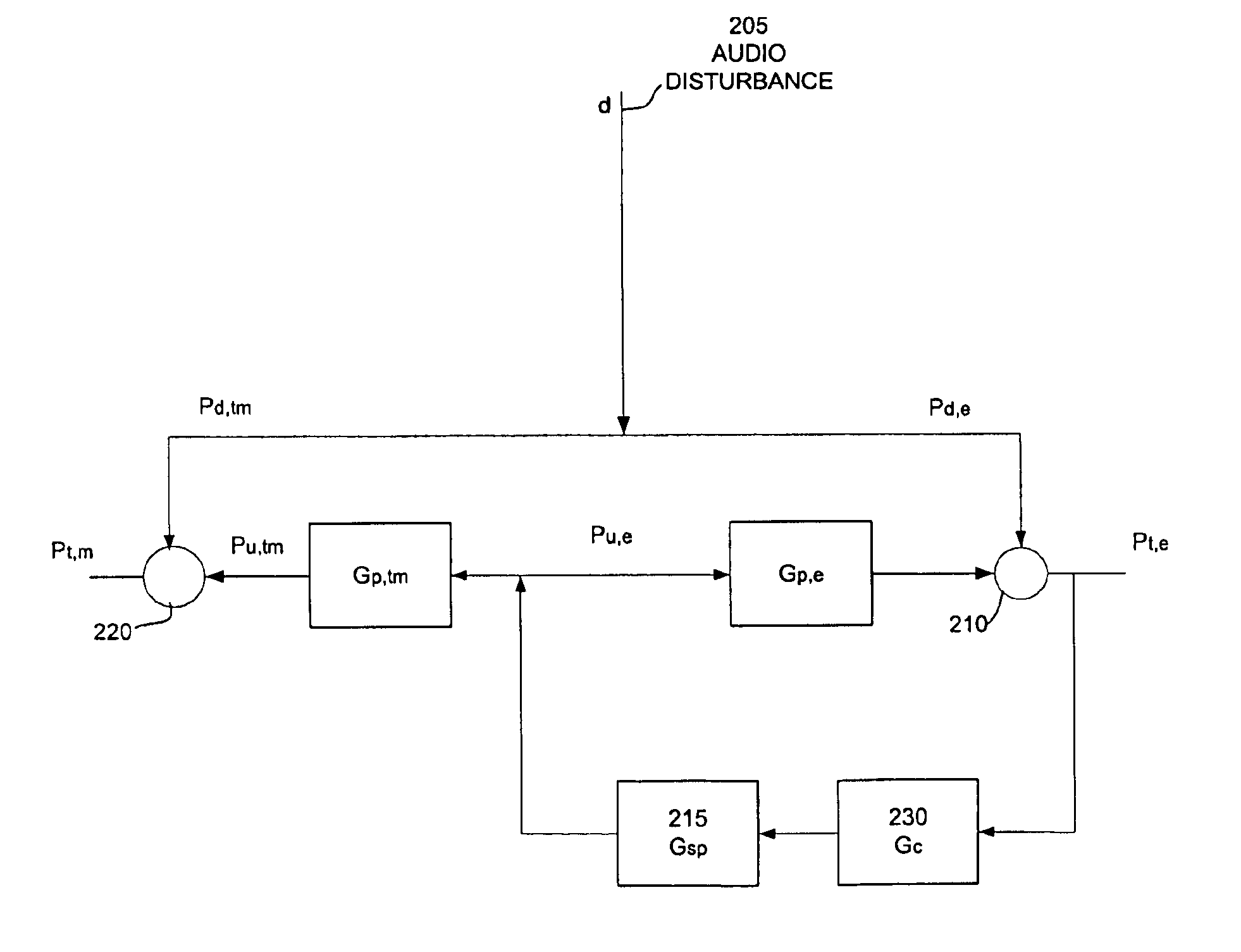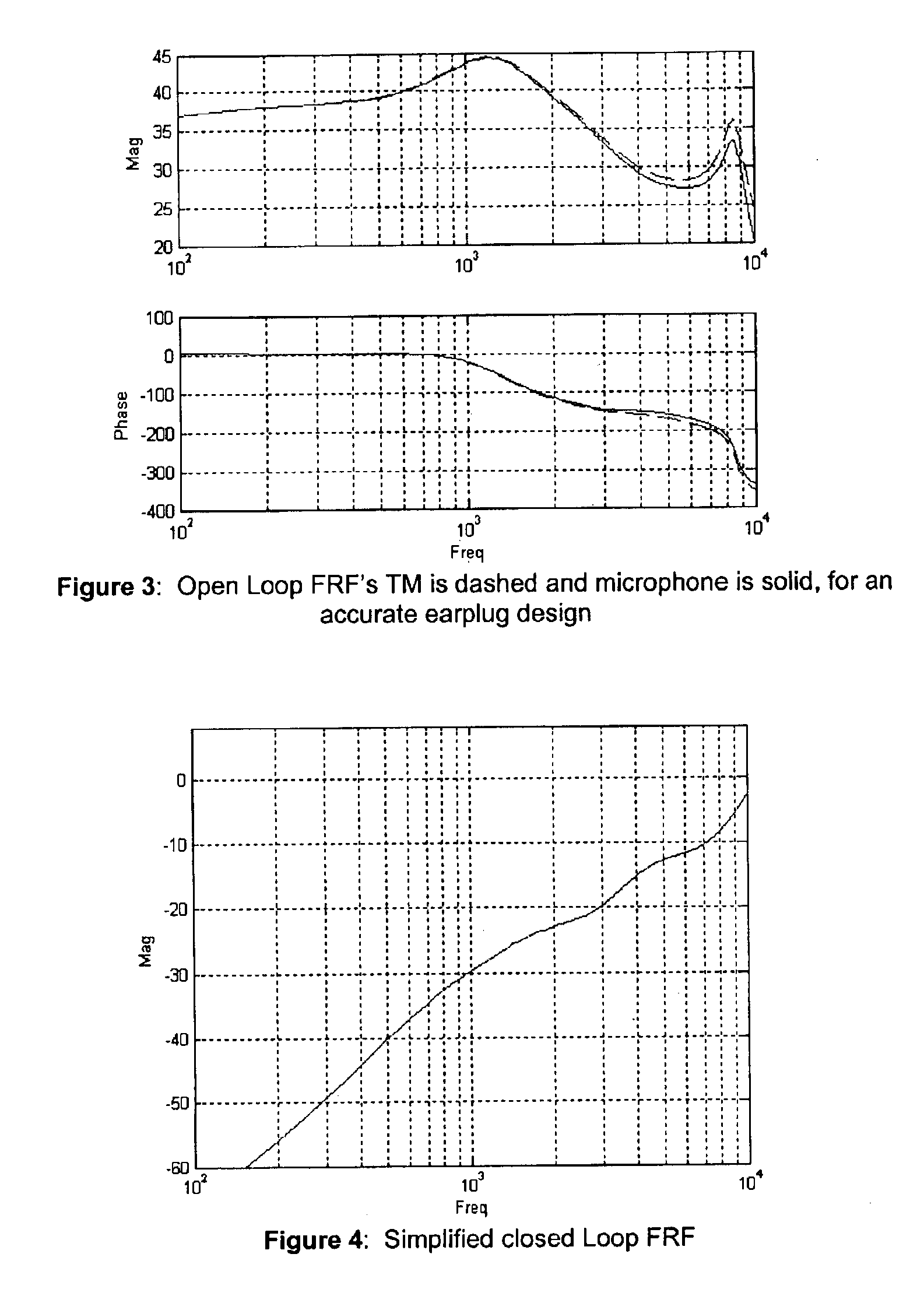Electronic earplug for monitoring and reducing wideband noise at the tympanic membrane
a wideband noise and tympanic membrane technology, applied in the field of earplugs, can solve the problems of inability to guarantee the performance of earplugs, the design of earplugs has failed to appreciate the critical differences in reducing, and the closed-loop performance of the design is not impressive, so as to achieve accurate monitoring
- Summary
- Abstract
- Description
- Claims
- Application Information
AI Technical Summary
Benefits of technology
Problems solved by technology
Method used
Image
Examples
Embodiment Construction
[0033]An embodiment of the present invention relates the design features of an electronic earplug and the connectivity of such features to the anatomical features of the occluded ear canal space to the dynamic acoustic impedance at any selected location inside the earplug or ear canal. Prior art electronic earplug designs have not sufficiently addressed those acoustic dynamics. The control attenuation of these prior art designs is not comparable to (and is always greater than) the actual perceived active noise reduction performance achieved at the tympanic membrane. This is especially true at frequencies higher than approximately 1.0 kHz for prior art designs of electronic earplugs. This observation is critical for any noise attenuation goals that relate to either human perception of the control attenuation or hearing safety metrics that involve measurement of exposure (e.g. Occupational Safety and Health Administration (OSHA) calculations of human noise exposure limits). This is be...
PUM
 Login to View More
Login to View More Abstract
Description
Claims
Application Information
 Login to View More
Login to View More - R&D
- Intellectual Property
- Life Sciences
- Materials
- Tech Scout
- Unparalleled Data Quality
- Higher Quality Content
- 60% Fewer Hallucinations
Browse by: Latest US Patents, China's latest patents, Technical Efficacy Thesaurus, Application Domain, Technology Topic, Popular Technical Reports.
© 2025 PatSnap. All rights reserved.Legal|Privacy policy|Modern Slavery Act Transparency Statement|Sitemap|About US| Contact US: help@patsnap.com



